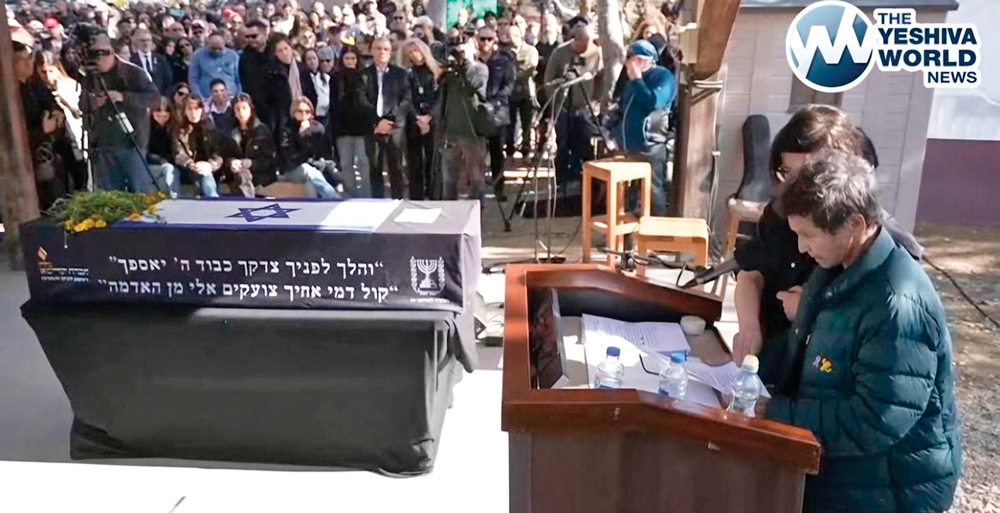There is a root in Biblical Hebrew גדד. It often appears in the “hitpael” form and means “cut,” i.e., “cut oneself” (self-mutilation). The “hitpael” form appears one time in the Torah (Devarim 14:1) and a few more times in the Nach. (The verb גדד also appears two times in the Aramaic part of the Tanach, in the book of Daniel. There it is not in the “hitpael,” and it refers to cutting a tree.)
In contrast to the above, biblical Hebrew also has a root אגד that has a “join/group” meaning. This root appears four times in Tanach, e.g., 2 Sam. 2:25: “agudah echat.”
In English, we have the word “ahistorical.” Here that initial “a” negates what comes after. (This is patterned on what happened in Greek.) Is it possible that the initial “aleph” of AGD does that to GDD? That is, it is not cut, but joined? This is very unlikely. Almost certainly, there is no relationship between these two opposite roots AGD and GDD.
Thirty-three times in Tanach we have a noun “gedud” that refers to a military unit. Where does this noun come from? There are two ways to relate it to GDD. In one view, it represents military men who invade the land of others, cut it into sections, make inroads, etc. In another view, it represents military men who were sectioned off from the rest of the Israelites. For advocates of the first view, see R. Hirsch to Gen. 49:19, and M. Clark, Etymological Dictionary, p. 35: “penetrating armed force.” See also Brown-Driver-Briggs, p. 151.
From the noun “gedud,” it is widely agreed that there developed a verb “yagodu,” to “gather against,” and that is its meaning at Psalms 94:21. See, e.g., Daat Mikra to this verse.
***
Most interesting is the discussion at Yevamot 13b regarding Devarim 14:1. The verse reads: “You are the children of the Lord your God; lo titgodidu and you shall not make any baldness between your eyes for the dead.” (“Between your eyes” is an idiom that means something like “on your head.”)
The plain sense of “lo titgodidu“ is a prohibition on self-mutilation. The Talmud understands it as referring to a grieving practice, but it is possible that it is a more general prohibition (see below). In any event, aside from this prohibition, the Talmud derives an additional prohibition from Devarim 14:1––the Israelites are prohibited from dividing themselves into factions. Without getting into the details, the conclusion of the passage at Yevamot 13b is that both prohibitions derive equally from Devarim 14:1 (and are derived from those two tavs in the word). This is a very odd claim, as the “factions” interpretation does not fit the context of the verse at all. Put another way, the Talmud is giving two interpretations of a verse that interpretations supposedly coexist, but the interpretations do not have anything to do with one another. The Maharal, in his Gur Aryeh commentary on this verse, asks how this is possible. (He suggests an answer but his answer is too homiletical for my taste.)
What does Rambam do with this sugya? In his Sefer HaMitzvot, negative prohibition #45, he enumerates both prohibitions under this negative commandment but remarks that the second is “kemo derash.” (This is a Hebrew translation of what he wrote in Arabic.) But later, in his Mishneh Torah, he does make it seem that both derive equally from the verse. See Avodah Zarah 12:13-14. Interestingly, Rashi on Devarim 14:1 only discusses the self-mutilation interpretation.
Going back to the plain sense of verse 14:1, the word למת (for the dead) does not necessarily relate to the “lo titgodidu” prohibition. Therefore, the prohibition on self-mutilation can be a general one, not related to grieving. Also, it is evident from the story at I Kings 18:28 that self-mutilation was practiced even outside of grieving contexts. As set forth in the Soncino commentary there: (Cutting oneself is) “a form of worship common to several cults with the purpose of exciting the pity of the gods, or to serve as a blood-bond between the devotee and his god.” See also the Daat Mikra commentary on 14:1.
There is one more interesting thing about the passage at Yevamot 13b. When the Talmud discusses the “factions” interpretation, it uses the following phrase, in the name of Reish Lakish: “lo taasu agudot agudot.” We mentioned above that גדד is a root that means “divide,” while אגד is a root that means “join/group.” When deriving a prohibition from “lo titgodidu,” we would have expected Reish Lakish to use a word from the root גדד. Why the choice of “agudot?” Perhaps Reish Lakish believed that “agudot” was derived from the root גדד, and was just an Aramaic form of this word. (It is also significant that Sifrei 96 on “lo titgodidu” cites to Amos 9:6, which uses the word “va-agudato.”) There may not even have been a Hebrew or Aramaic word that meant “factions” that was clearly derived from the root גדד in the time of Reish Lakish.
There is a ramification here: how should one translate “lo taasu agudot agudot?” Is the proper translation: “Do not form groups (and) groups”? Or “Do not form factions (and0 factions”? Most translations prefer the “factions” word, implicitly connecting “agudot” to the root G-D-D. See, e.g., Jastrow, p. 11, and the ArtScroll Yevamot 13b.
With regard to the reason for the “lo titgodidu”-factions interpretation, Rashi writes that the purpose is to avoid giving the impression that there is more than one Torah, while Rambam writes that the purpose is to prevent conflict.
***
Now that you are all prepared on the root גדד, I will assign some homework. Look at the blessing for Gad at Gen. 49:19: “Gad gedud yegudenu, ve-hu yagud akev.” How would you translate it? Just to start you off, R. Kaplan in The Living Torah translates: “Raiders shall raid Gad, but he will raid at their heel.” R. Kaplan is translating all three of those words with a “raid” meaning, and has Gad as the object in the first phrase. But there are many other ways to translate this sentence. For example: 1) Raiders shall raid Gad but he will cut off their heel; 2) Gad shall go forward and attack, and he shall attack the (enemy’s) heel, and 3) Good fortune will pursue Gad, and he will have good fortune in the end. (This last interpretation is based on the “fortune” meaning of the letters G-D. “Gad” seems to have been the name of an ancient deity in charge of a man’s fortune. See Isa. 65:11 and Daat Mikra there, Encyclopaedia Judaica 7:249, and Shab. 67b. For many other possible translations of the blessing to Gad, see the notes in The Living Torah.
I would like to thank Rabbi Ezra Frazer for suggesting this topic to me and for some of the references.
Mitchell First can be reached at [email protected]. Please visit his website rootsandrituals.org for more of his articles. As an attorney, he is a divisive force. But as a scholar, he tries to unite his readers around correct interpretations.












